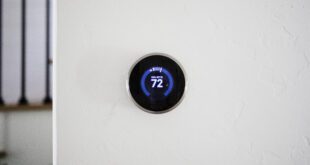 There is nothing like a blast of frigid weather – and an energy shortage – to wake up the US consumer to the economic value of energy efficiency.
There is nothing like a blast of frigid weather – and an energy shortage – to wake up the US consumer to the economic value of energy efficiency.
We were caught almost napping this winter, drowsy in the confidence that we are awash in plenty of oil and natural gas.
True, the US is in the middle of an energy renaissance. But the right kind of energy is not necessarily available at the right place and at the right time.
Consider New England, where prices escalated this winter (as well as last) when power plants and homes vied for limited natural gas. Because of complicated market issues, New England lacks enough pipeline to carry sufficient natural gas into the region during periods of high demand.
Or witness the recent shortages of propane, a fuel used by US homes and businesses for heating.
The propane shortage was so severe that 20 states issued disaster declarations, according to a letter that 29 US Senators recently sent to President Barack Obama. Extreme cold increased demand for propane, creating a shortage that was aggravated by fuel transportation problems. Propane supplies have fallen 43.8 percent from a year ago. Reserves neared their lowest point in five years. This doubled, even tripled prices,the letter said.
Energy efficiency won’t solve the propane problem entirely, but it can help a lot.
It’s not that the US is ignoring energy efficiency. Quite the opposite. Utilities are saving about 23 billion kWh/year, or enough energy to power over two million average American homes for a year, according to the American Council for an Energy-Efficient Economy.
But these energy efficiency programs focus on electricity – not propane and fuel oil.
Steven Nadel, ACEEE executive director, explained this problem in testimony last week to a subcommittee of the Senate Energy and Natural Resources. Nadel was asked to provide recommendations on how energy efficiency might help with the propane crisis.
“Many utilities offer energy efficiency programs for homes and businesses that use electricity and natural gas. But none offers programs for propane and fuel oil, and the fuel dealers are usually too small and under-capitalized to offer energy efficiency services,” Nadel said.
However, some states, especially in the Northeast, are finding ways to make propane use more energy efficient, he added.
Vermont, already an energy efficiency leader in many ways, operates a $5 million/year program for propane, oil, and wood. Run by Efficiency Vermont, the program uses money from ISO New England’s forward capacity market and from emission allowance auctions held by the Regional Greenhouse Gas Initiative, a nine-state cap and trade program. The program residential retrofits, with some money also going to small business and commercial operations, Nadel said.
Of course, not all states have forward capacity market or cap-and-trade funds they can channel into propane efficiency. So another option, Nadel said, is to fund propane efficiency with a small tax on unregulated fuels, as New York now does. The money could be channeled back to benefit propane users. Of course, taxes aren’t easily won. Congress might be more apt to support other ideas put forward by Nadel, such as federal technical assistance to states, competitive grants and financing.
A lot of room exists to make propane use more efficient. An ACEEE study Reducing Oil Use through Energy Efficiency: Opportunities Beyond Cars and Light Trucks found potential to reduce propane use in home heating by about 38 percent and in water heating by about 28 percent.
“Given the current propane shortage and the likelihood that the events that precipitated this shortage could happen again, it makes sense to improve the energy efficiency of propane-fired appliances and propane-heated buildings,” Nadel told the subcommittee. “Accelerated efficiency efforts for propane will not solve the current crisis, but they can help avert future crises.”
So energy efficiency is not a quick fix for this winter’s propane shortage, but it’s a plan for the future.You can think of it as saving energy, or as making our energy supply more productive — getting greater value for each dollar spent per Btu. It’s cheaper than making more energy. Efficiency programs have cost utilities on average about 3 cents per kWh, which is about one half to one third the cost of power from a new power plant, according to an upcoming ACEEE report.
Whether we are energy rich or energy short, we need to manage our energy supplies for maximum economic worth. That’s what energy efficiency is all about — as well as increasing our chances of having enough supply should yet another rainy, or rather snowy, day arrive.
About Elisa Wood
Elisa Wood is an editor at EnergyEfficiencyMarkets.com. She has been writing about energy for more than two decades for top industry publications. Her work has been picked up by CNN, the New York Times, Reuters, the Wall Street Journal Online and the Washington Post.
 Alternative Energy HQ solar power for homes, wind energy, and bio fuel issues
Alternative Energy HQ solar power for homes, wind energy, and bio fuel issues

 Can an Energy-Efficient Mortgage Save You Money?
Can an Energy-Efficient Mortgage Save You Money?








